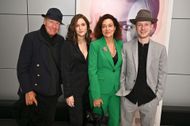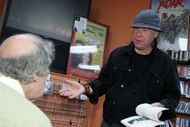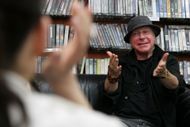Henry Jaglom, a filmmaker who mainly worked outside the Hollywood studio system, died at 87. His daughter, Sabrina Jaglom, told trade outlets he died at home in Santa Monica. He had a long career that began in the 1970s and continued with small, actor-focused films across several decades.
Henry Jaglom first drew wide attention with a film that many viewers found puzzling at first, but which has since been discussed more often. That early work demonstrated several qualities that he would later continue to utilize. Short scenes that relied on actors’ reactions, along with a mix of realistic and dreamlike moments, were what he was known for. He often had to delay shooting due to running out of funds.
Early film and directorial debut with A Safe Place

A Safe Place (1971) was his first feature as a writer-director. The film starred Tuesday Weld as a young woman named Noah (also known as Susan), who lives in New York and tends to lose track of her memories. In one of the repeated images, Noah recalls a magician in Central Park who brought her tiny things, i.e., a floating silver ball, a star ring, and a toy ark, which she uses as charms.
Jack Nicholson's character comes back in the form of a memory image, and Orson Welles plays a magician. The film alternates between past and present, rather than following a linear storyline, and the reviews of the time were divided on whether it was a success.
Specific later films and notable scenes

After A Safe Place, Henry Jaglom made several films that used focused settings and dialogue-heavy scenes. In Tracks (1976), Dennis Hopper plays a Vietnam veteran who escorts a comrade’s coffin across the country by train; the film shows how the veteran’s flashbacks break a new relationship he tries to form on the trip.
Can She Bake a Cherry Pie? (1983) sets its characters in Upper West Side apartments, where much of the action hinges on loose, improvised dialogue between the cast. Someone to Love (1987) stages a Valentine’s Day gathering in an old theater. A character asks guests on camera about loneliness and relationships, and the film includes what is widely described as Orson Welles’s final live-action role.
Last Summer in the Hamptons (1995) centers on a family dealing with the sale of their home and the tensions that it brings out.
Henry Jaglom’s working method and the lunches with Orson Welles

Henry Jaglom often gave actors room to vary dialogue and to respond in the moment, which he used as a way to shape scenes on set. Outside the set, he kept a close friendship with Orson Welles.
Jaglom recorded many of their lunches in the late 1970s and early 1980s; those tapes were later edited into the book My Lunches With Orson, which preserves conversations about films, memory, and Welles’s own projects. The recordings are part of how Jaglom’s career is documented beyond his movies.

He continued to film with low budgets, occasionally with repeat stars, and some of his films have been revived at festivals or restorations.
Love movies? Try our Box Office Game and Movie Grid Game to test your film knowledge and have some fun!
